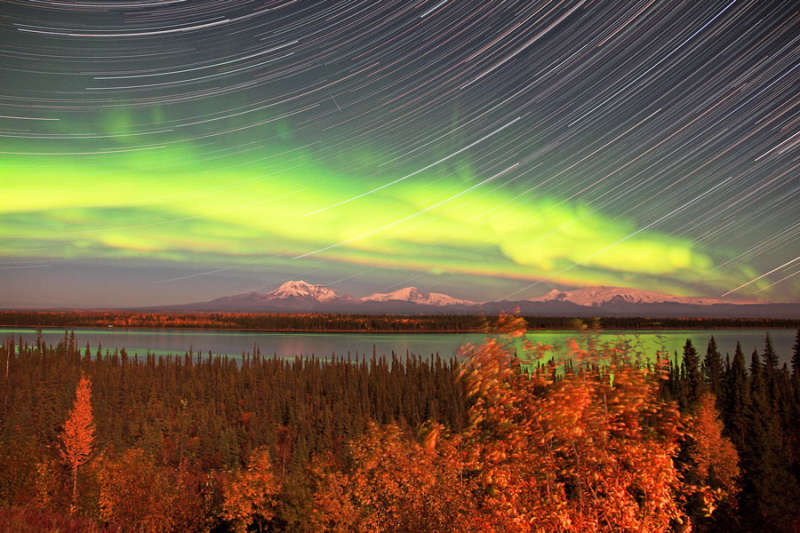
|
Credit & Copyright: Paul Aslop
Explanation:
Are those green clouds or aurora?
Photographed above two weeks ago, puffy green aurora help the
Moon illuminate the serene Willow Lake and the snowy
Wrangell and
Saint Elias Mountains in eastern
Alaska,
USA.
Although auroras might first appear to be moonlit clouds,
they only add
light to the sky
and do not block background stars from view.
Called northern lights in the northern hemisphere,
auroras are caused by
collisions between
charged particles from the magnetosphere and air molecules
high in the Earth's atmosphere.
If viewed from space, auroras can be
seen to glow in
X-ray and ultraviolet light as well.
Predictable auroras likely occur a few days after a
powerful magnetic event
has been seen on the
Sun.
|
January February March April May June July August September October November December |
| ||||||||||||||||||||||||||||||||||||||||||||||||
NASA Web Site Statements, Warnings, and Disclaimers
NASA Official: Jay Norris. Specific rights apply.
A service of: LHEA at NASA / GSFC
& Michigan Tech. U.
Based on Astronomy Picture
Of the Day
Publications with keywords: aurora - star trail - magnetic field
Publications with words: aurora - star trail - magnetic field
See also:
- APOD: 2025 September 13 Á Star Trails over One Mile Radio Telescope
- Savudrija Star Trails
- APOD: 2025 January 7 Á A New Years Aurora and SAR Arc
- APOD: 2024 December 8 Á Aurora around Saturns North Pole
- APOD: 2024 October 16 Á Colorful Aurora over New Zealand
- APOD: 2024 October 13 Á Aurora Timelapse Over Italian Alps
- Northern Lights, West Virginia
